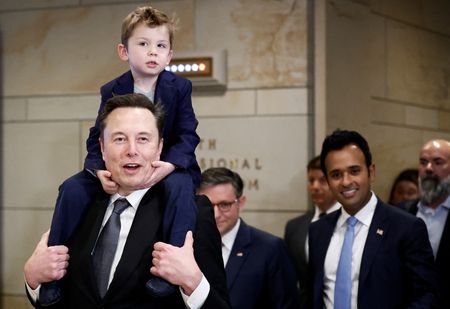By Nichola Groom
LOS ANGELES (Reuters) – U.S. Energy Secretary Jennifer Granholm said on Thursday she was unsure if two nuclear power plants with previous plans to shut will apply for subsidies the Biden administration launched this week as part of its policy to fight climate change.
The administration on Tuesday opened applications until May 19 for the first round of a $6 billion credit program included in last year’s bipartisan infrastructure bill that seeks to stop nuclear power plants from shutting.
In the first round, the Energy Department is giving priority to plants that had filed plans to shut. Those plants include Entergy Corp’s Palisades plant in Michigan, and PG&E’s Diablo Canyon plant in California.
Granholm said this week the administration is “using every tool available” to get the country powered by clean energy by 2035, a goal of President Joe Biden’s, including by prioritizing the existing nuclear power fleet.
Granholm, speaking to reporters in Los Angeles on Thursday, pointed to Palisades as a plant that is scheduled to close but also added “I don’t know if they will apply or not.” The plant could shut as soon as May 31.
Entergy spokesperson Michael Bowling said in a statement that the company has been contacted by government officials about possibly operating the Palisades facility beyond its May closing date and had also held talks with potential buyers of the plant. But, he said, Palisades’ permanent shutdown remained on schedule.
Regarding Diablo Canyon, Granholm said “we’ll see what happens, but I’m not sure that the community of Diablo Canyon is on board” with applying for funding that would reverse the shutdown of its two reactors, planned in 2024 and 2025.
Community members had previously had concerns about earthquakes, nuclear waste, and the use of water to cool the plant.
PG&E indicated this week the nuclear credit program would not change its plan immediately. “As a regulated utility, we are required to follow the energy policies of the state,” said PG&E spokesperson Suzanne Hosn about the DOE program this week. “At this time, the state has not changed its position regarding the future of nuclear energy in California.”
The U.S. nuclear power industry’s 93 reactors generate more than half of the country’s carbon-free electricity, according to the Department of Energy. But 12 reactors have closed since 2013 in the face of competition from renewable energy and plants that burn plentiful natural gas.
If no nuclear plants that plan to shut apply in the first round it could be an inauspicious start for the program.
“None of these reactors seem like a good fit to us,” the nonpartisan ClearView Energy Partners said in a research note this week about the Michigan and California plants.
(Additional Reporting by Timothy Gardner; Editing by Aurora Ellis)












